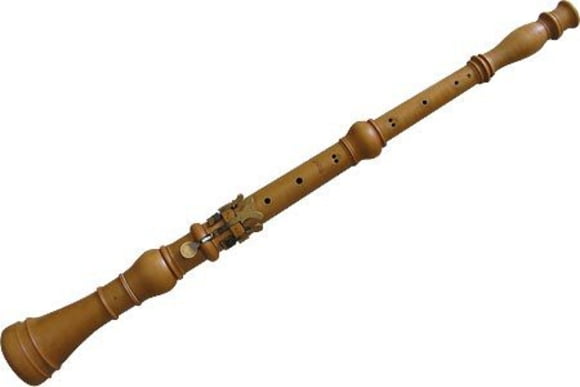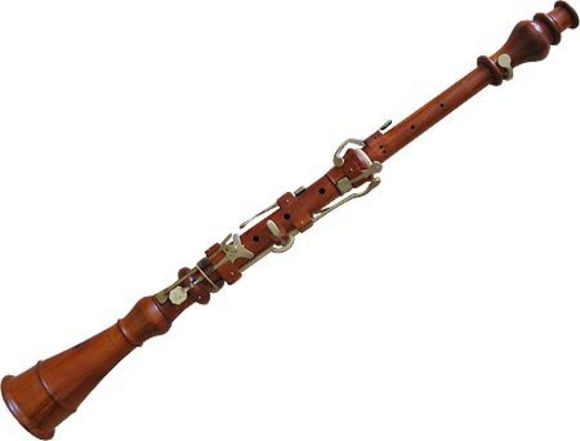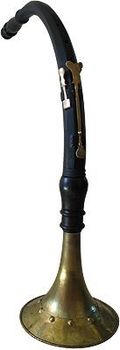2. History & Family
The oboe (from the French hautboy, literally high wood) is usually made from a black hardwood called grenadilla, and has silver-plated keywork and a double reed. Its sound is by turns round, sweet, lively, chirpy, haunting, plangent and penetrating. It can express perfectly both the death of the swan in Tchaikovskys Swan Lake, and the quacking duck in Prokofievs Peter and the Wolf.
The oboe evolved from the shawm in the late 17th Century. The shawm was made from a single piece of wood, had a double reed, and made a loud, raucous sound. The oboe was novel in that it was made from three separate pieces of wood, which allowed for far greater accuracy in tuning the holes, and made the sound much more refined. Initially it had only two keys and was made from boxwood, which produced a mellow, resonant tone.

Baroque oboe by Paul Hailperin, after Paulhahn
From about 1750, the bore began to narrow, which made the sound more penetrating. Gradually, more keys were added, principally to even out the sound between each note, but also to help players negotiate increasingly complex and chromatic music. In the early to mid 19th Century, oboes began to be made from hardwood as imported woods became more readily available, and by the late 19th Century, the oboe pretty much resembled the modern instrument, although technical developments continued with new ideas for fingering systems and side and trill keys. In essence though, a basic student model of today is not so different from the oboe of a hundred years ago.

Early-nineteenth century oboe, after Floth, by Richard Earle
To begin with, oboes were employed in bands, with standard instruments playing the top parts, tenor oboes taking the middle lines and bassoons providing the bass. They supplied music for ceremonies and functions both courtly and military. Little by little however, they were added to the strings in orchestras - they were in fact the first winds to be included, joined later by a pair of horns, and eventually the full wind section of flutes, clarinets and bassoons by the time of Mozart and Beethoven. The oboe has maintained its predominant position in the orchestra though, always responsible for giving the A for tuning - a good first oboe is essential for a good orchestra, as its clear sound always cuts through and holds the orchestra together.
The tenor oboes mentioned above came in two forms in the 18th Century - straight ones called tailles, used in England by Purcell, and curved ones called oboi da caccia, which were covered in leather and had a flared metal (or wooden) bell like a hunting horn, as used by Bach in his Passions. They were in F, their lowest note being the F below middle C, and were the precursors to the cor anglais, or English horn. The cor anglais as it is known now first appeared in England in the 1790s, and was praised for its plaintive, melancholy sound, used to great effect by Berlioz in the Symphonie Fantastique, and Dvorak in the New World Symphony.

Oboe da caccia, copy by Peter van der Poel
There is also an alto oboe, or oboe damore, in A - a little longer than the standard oboe, with a short curved crook and an egg-shaped bell. This too existed in the 18th Century, and was much loved by Bach for his Cantatas. After Bach, composers rarely used it - the most well known of the few examples in more recent music is Ravels Bolero.
Relatively few people choose to take up the oboe, especially by comparison with the flute and clarinet, which is a great shame considering its beauty. Those who do pursue it however, have the advantage that they will always be far more in demand by youth and amateur orchestras!




